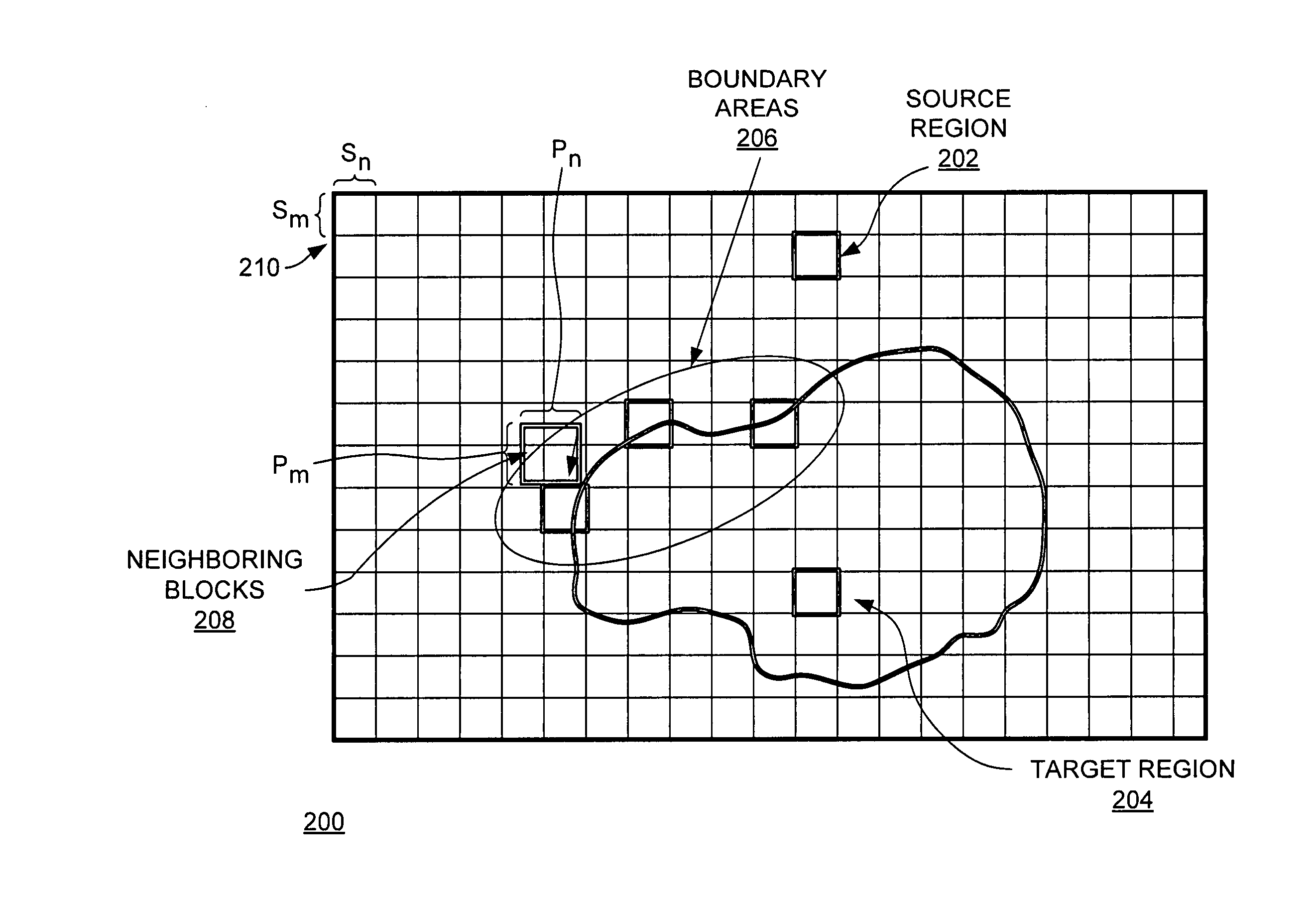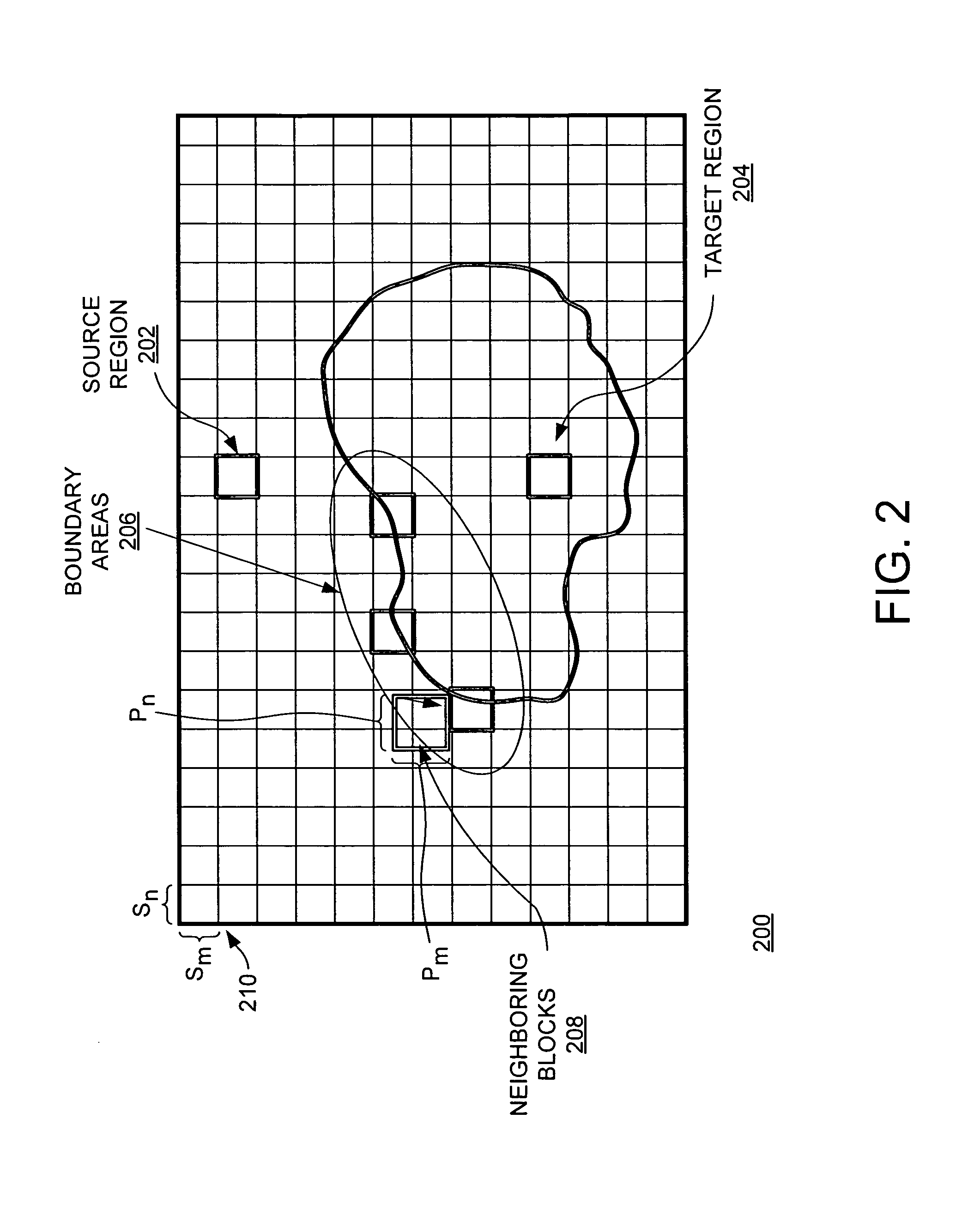Method and apparatus for performing an in-painting process on an image
a technology of in-painting and image, applied in the field of image processing system, can solve the problems of insufficient label optimality, inability to efficiently and accurately identify the best label, and damage to images or missing parts,
- Summary
- Abstract
- Description
- Claims
- Application Information
AI Technical Summary
Benefits of technology
Problems solved by technology
Method used
Image
Examples
example1
Example1:G{->i1,->i2}=∑j(->i1,j-->i2,j)2Example2:G{->i1,->i2}=(∑j(->i1,j-->i2,j)p)1 / p
[0043]At step 506, the method 500 examines smoothness costs between pairs of the neighboring blocks for each boundary area. In one embodiment, the smoothness cost for each pair of the neighboring blocks (xi and xj) associated with the boundary area is computed as:
E2(xi,xj)=∑di∈[Pm2-sm,Pm2]×[-Pn2,Pn2]di∈[1,sm]×[-Pn2,Pn2](Io(xi+di)-Io(xj+dj))2
[0044]Step 508 to step 512 represent an exemplary embodiment of the step 412 of the method 400. At step 508, the method 500 assigns initial intensity values for the boundary areas. In some embodiment, the image processing software assigns initial intensity values onto the source region, the boundary areas and / or the target region. These values may be assigned to homogenous blocks (i.e., nodes) of pixels (e.g., a block of eight by eight pixels). In the target region, nodes are initialized using intensity values of proximate neighboring blocks because the smoothnes...
PUM
 Login to View More
Login to View More Abstract
Description
Claims
Application Information
 Login to View More
Login to View More - R&D
- Intellectual Property
- Life Sciences
- Materials
- Tech Scout
- Unparalleled Data Quality
- Higher Quality Content
- 60% Fewer Hallucinations
Browse by: Latest US Patents, China's latest patents, Technical Efficacy Thesaurus, Application Domain, Technology Topic, Popular Technical Reports.
© 2025 PatSnap. All rights reserved.Legal|Privacy policy|Modern Slavery Act Transparency Statement|Sitemap|About US| Contact US: help@patsnap.com



